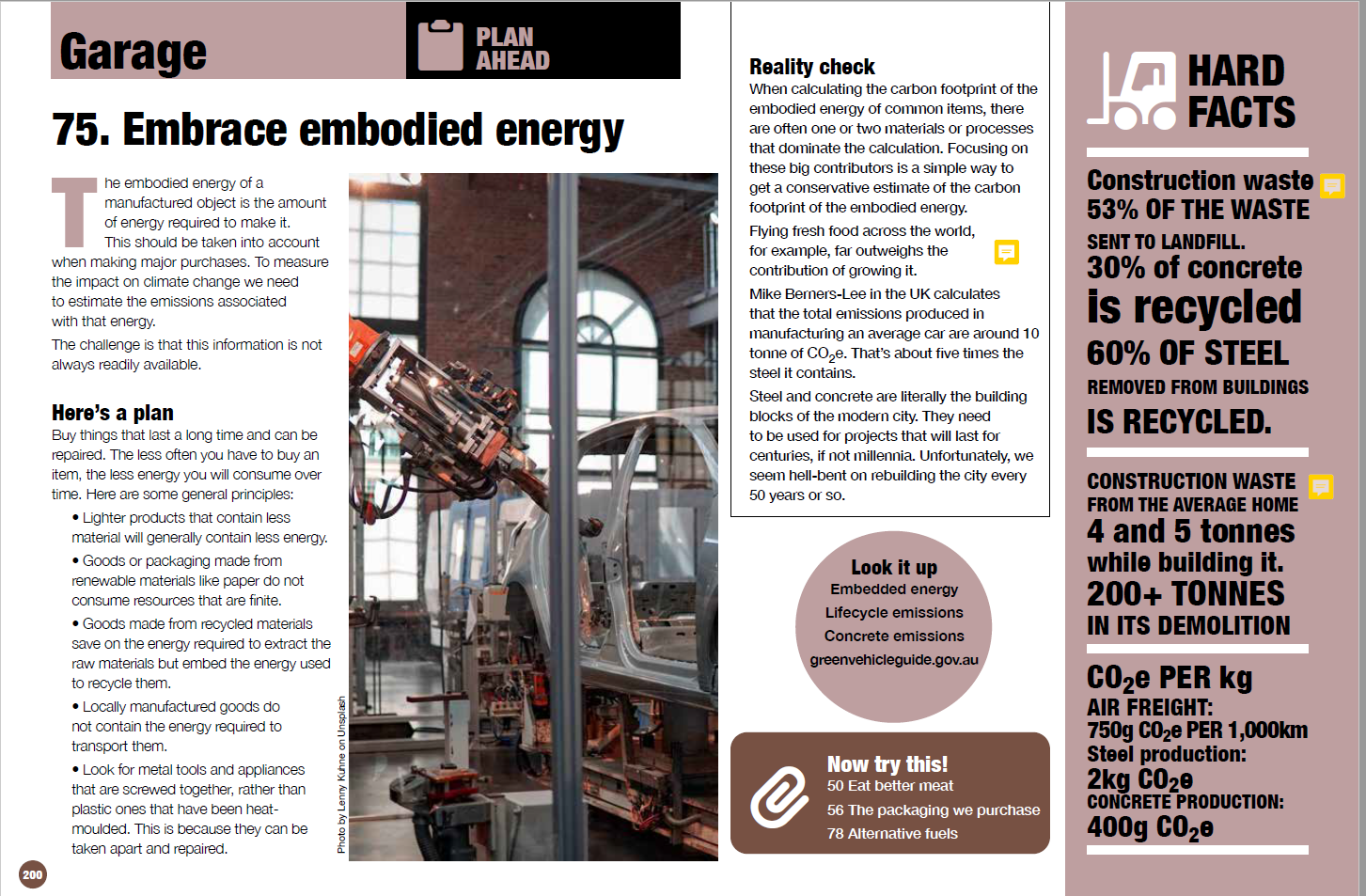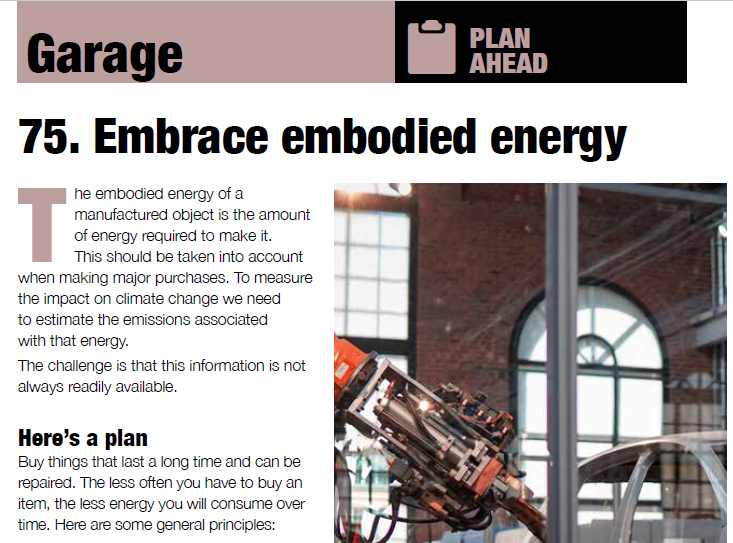The embodied energy of a manufactured object is the amount of energy required to make it. This should be taken into account when making major purchases. To measure the impact on climate change we need to estimate the emissions associated with that energy.

Here’s a plan
The challenge is that this information is not always readily available.
Buy things that last a long time and can be repaired. The less often you have to buy an item, the less energy you will consume over time. Here are some general principles:
- Lighter products that contain less material will generally contain less energy.
- Goods or packaging made from renewable materials like paper do not consume resources that are finite.
- Goods made from recycled materials save on the energy required to extract the raw materials but embed the energy used to recycle them.
- Locally manufactured goods do not contain the energy required to transport them.
- Look for metal tools and appliances that are screwed together, rather than plastic ones that have been heat-moulded. This is because they can be taken apart and repaired.
Reality check
When calculating the carbon footprint of the embodied energy of common items, there are often one or two materials or processes that dominate the calculation. Focusing on these big contributors is a simple way to get a conservative estimate of the carbon footprint of the embodied energy.
Flying fresh food across the world, for example, far outweighs the contribution of growing it.
Mike Berners-Lee in the UK calculates that the total emissions produced in manufacturing an average car are around 10 tonne of CO2e. That’s about five times the steel it contains.
Steel and concrete are literally the building blocks of the modern city. They need to be used for projects that will last for centuries, if not millennia. Unfortunately, we seem hell-bent on rebuilding the city every 50 years or so.
Hard facts
Construction waste
- 53% of the waste sent to landfill.
- 30% of concrete is recycled
- 60% of steel removed from buildings is recycled.
Construction waste from the average home
- 4 and 5 tonnes while building it.
- 200+ tonnes in its demolition
CO2e per kg
- Air freight: 750g CO2e per 1,000km
- Steel production: 2kg CO2e
- Concrete production: 400g CO2e
Look it up
Now try this!
- 50 Eat better meat
- 56 The packaging we purchase
- 78 Alternative fuels
